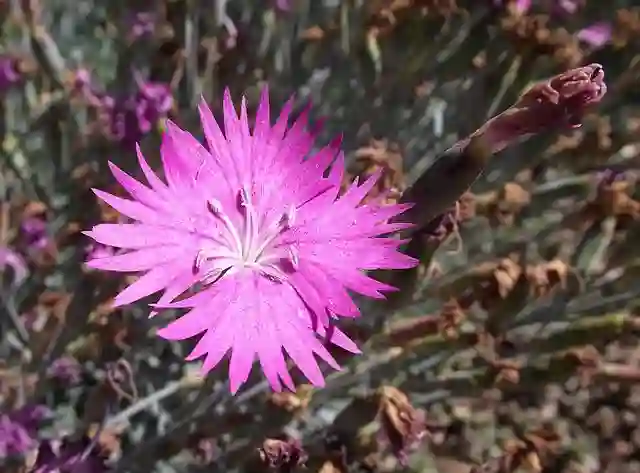FAQs About Nepenthes Albomarginata Black
Nepenthes Albomarginata Black is a striking plant that has captured the fascination of many carnivorous plant enthusiasts. Its unique dark coloration and intriguing trapping mechanism make it a popular choice for collectors and hobbyists. Here are some frequently asked questions about this fascinating plant, based on my own experiences and observations.
Plant Family: Nepenthaceae – 207 Species in Genus Nepenthes
What Is Nepenthes Albomarginata Black?
Nepenthes Albomarginata Black is a variety of the Nepenthes Albomarginata species, known for its distinctive blackish-purple coloration. This color variation is a result of selective breeding and natural mutations. Native to Southeast Asia, this species is a part of the tropical pitcher plant family, famous for its unique ability to trap and digest insects.
How to Care for Nepenthes Albomarginata Black?
Caring for Nepenthes Albomarginata Black requires understanding its specific needs and providing the right conditions. Here’s what I’ve found works best:
- Light: This plant thrives in bright, indirect light. In my experience, it does well under fluorescent or LED grow lights, especially if you can mimic the dappled sunlight it would receive in its native habitat.
- Temperature: Nepenthes Albomarginata Black prefers warm temperatures, typically between 70-85°F (21-29°C) during the day and slightly cooler at night. It’s not frost-tolerant, so keep it in a warm environment.
- Humidity: High humidity is crucial. I maintain around 50-60% humidity, which seems to keep my plant healthy and vibrant. A humidity tray or a small humidifier can be helpful.
- Watering: Use distilled or rainwater, as tap water can be harmful due to its mineral content. I water my plant whenever the topsoil feels dry, making sure not to let it sit in water.
- Soil: Nepenthes Albomarginata Black thrives in a well-draining, acidic soil mix. I use a blend of sphagnum moss, perlite, and orchid bark, which provides the right balance of aeration and moisture retention.
How to Propagate Nepenthes Albomarginata Black?
Propagation of Nepenthes Albomarginata Black can be done through several methods, but here’s what I find works best:
- Cuttings: Take stem cuttings with at least one leaf node. I usually use a rooting hormone to increase success rates and place the cuttings in a moist, acidic soil mix. A propagation dome or a plastic bag helps maintain humidity during this process.
- Seed: Growing from seeds is another option, though it requires patience. I sow the seeds on a sterile, moist medium and keep them in a warm, humid environment until they germinate. Seedlings may take several months to mature.
What to Plant With Nepenthes Albomarginata Black?
Pairing Nepenthes Albomarginata Black with companion plants can create a stunning display. I recommend:
- Sphagnum Moss: It provides a natural, aesthetic ground cover and helps maintain humidity around the plant.
- Other Carnivorous Plants: Plants like Nepenthes Ventricosa or Drosera Capensis can complement Nepenthes Albomarginata Black, adding diversity to your collection.
- Orchids: Low-growing orchids, such as Masdevallia, can add a touch of color and interest without overshadowing the pitcher plant.
How to Use Nepenthes Albomarginata Black?
Besides being a visually striking plant, Nepenthes Albomarginata Black can serve practical purposes:
- Pest Control: Its natural insect-trapping mechanism helps control pests in your indoor garden or greenhouse.
- Decorative Appeal: The plant’s unique appearance makes it a conversation piece and a focal point in terrariums or plant displays.
Is Nepenthes Albomarginata Black Toxic?
Nepenthes Albomarginata Black is not toxic to humans or pets. However, its digestive enzymes are designed to break down insects, so it’s best to keep it away from small children who might be curious. I’ve never encountered any toxicity issues, but it’s always good to supervise pets and children around carnivorous plants.
Common Problems and Solutions
- Brown Leaf Tips: This can be a sign of low humidity or high mineral content in the water. Increasing humidity and using distilled water should help.
- Wilting: Wilting might occur if the plant is not receiving enough water or light. Ensure it gets adequate moisture and light, and adjust as needed.
Final Thoughts
Nepenthes Albomarginata Black is a fascinating addition to any plant collection, offering both beauty and functionality. With proper care, this plant can thrive and make a stunning impact in your indoor garden. Whether you’re an experienced grower or just starting, understanding its needs will help you keep this unique carnivorous plant in top condition.
If i die, water my plants!



